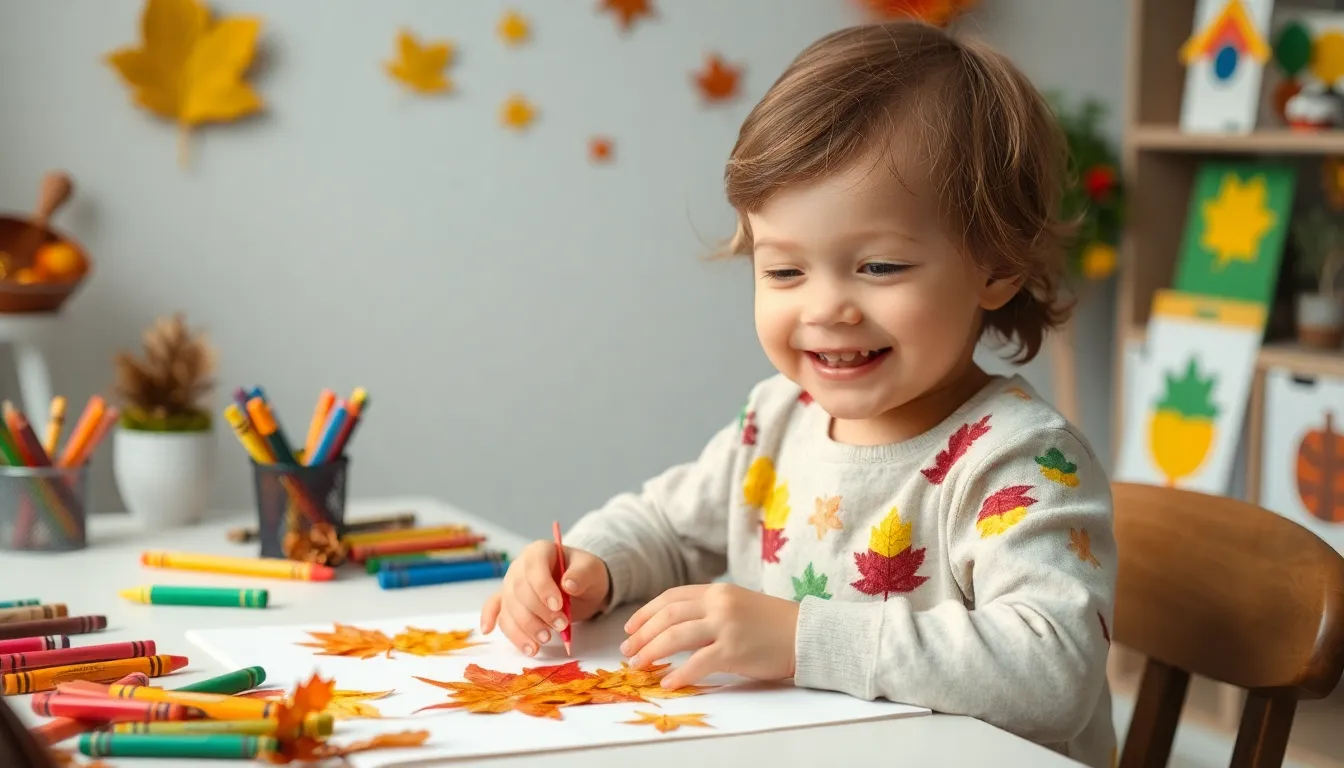Craft projects for preschoolers aren’t just about glue and glitter; they’re gateways to creativity, learning, and a bit of chaos. Imagine a world where little hands create masterpieces while sneaking in some sneaky educational moments. It’s like a ninja school for future Picassos, but with more macaroni and fewer spy gadgets.
These projects spark imagination and keep tiny minds engaged, transforming mundane afternoons into vibrant adventures. Whether it’s turning a paper plate into a whimsical animal or crafting a colorful collage, each project is an opportunity for discovery. Plus, parents can finally embrace the mess—after all, isn’t that what art is all about? So let’s dive into the wonderful world of preschool crafts, where every little creation is a big step in their artistic journey.
Table of Contents
ToggleImportance Of Craft Projects In Preschool
Craft projects play a crucial role in preschool education. These activities help cultivate essential skills while providing enjoyable experiences for young learners.
Developmental Benefits
Craft projects support fine motor skill development. By cutting, gluing, and assembling materials, preschoolers enhance hand-eye coordination and dexterity. Cognitive abilities also grow during these activities, as children follow instructions and solve problems. Social skills improve when kids collaborate on projects, sharing ideas and materials. Emotional development is another aspect; kids express their feelings creatively and boost their self-esteem through completed crafts. According to developmental experts, engaging in art-related tasks fosters holistic growth in preschoolers.
Enhancing Creativity
Creativity flourishes through craft projects. Young children experiment with colors, shapes, and textures while exploring various materials. Innovative thinking arises as they envision and execute their ideas. Projects like decorating paper plates or designing collages encourage imaginative expression. Unique creations evolve from simple materials, stimulating original thought processes. Preschool craft projects allow children to break free from traditional boundaries, fostering an environment that emphasizes exploration and creativity. Engaging in these activities bolsters confidence and encourages preschoolers to share their artistic perspectives.
Popular Craft Projects For Preschoolers

Craft projects for preschoolers offer a variety of engaging activities tailored to their interests and developmental needs. Below are some popular categories of crafts that capture their creativity while serving educational purposes.
Seasonal Crafts
Seasonal crafts relate to festivities and natural changes throughout the year. In fall, children can create colorful leaf rubbings using crayons. Winter invites activities like making paper snowflakes or ornaments for holiday trees. Spring encourages projects like flower handprints or butterfly paintings. Summer provides opportunities for children to make sun-catching decorations using various colored papers. Featuring materials found in nature or household items enhances the excitement of these crafts.
Educational Crafts
Educational crafts help preschoolers learn while they create. For example, counting beads on a string can develop numerical skills. Creating alphabet flashcards from craft paper reinforces letter recognition. Shape collages using cut-out shapes promote shape identification and fine motor skills. Craft projects centered around community helpers, such as making fire truck models, can instill knowledge about occupations. Using these engaging activities fosters creativity while supporting learning objectives effectively.
Materials Needed For Preschool Craft Projects
Materials play a vital role in making craft projects engaging for preschoolers. Selecting the right supplies ensures safety and enhances creativity.
Safe and Non-Toxic Supplies
Choosing safe and non-toxic supplies is essential for preschool crafts. Look for child-friendly adhesives, such as glue sticks or washable PVA glue. Crayons, markers, and paints should be labeled non-toxic and washable to ensure easy cleanup. Using colorful paper and natural materials like cotton balls encourages imaginative play while maintaining safety. When selecting supplies, opt for brands that comply with safety standards to avoid harmful chemicals. Ultimately, ensuring the materials prioritize children’s health fosters a worry-free crafting environment.
Recyclable Materials
Recyclable materials offer a cost-effective way to spark creativity. Empty cardboard boxes, plastic bottles, and egg cartons provide endless crafting possibilities. Collecting scraps like fabric pieces, magazines, and paper rolls fuels inspiration for imaginative projects. Children can transform these recyclables into creative masterpieces while learning about sustainability. Incorporating these materials into crafts also teaches preschoolers to think critically about reusing items. Thus, using recyclables not only develops artistic skills but also instills an appreciation for environmental responsibility.
Tips For Successful Craft Project Execution
Successful execution of craft projects requires careful planning and a supportive environment. Establishing a dedicated craft space fosters creativity and minimizes distractions.
Setting Up A Craft Space
Designate an area where preschoolers can freely express their creativity. Use a sturdy table covered with a protective layer to handle spills and messes. Store supplies within reach, such as crayons, paper, and scissors, ensuring accessibility. Utilize clear bins or shelves for easy organization and visibility of materials. Dedicate this space to art projects, creating an inviting atmosphere that encourages exploration.
Encouraging Independence
Promote independence by allowing children to select their own materials for projects. Provide choices between different colors and textures, enabling personal expression. Present step-by-step instructions to guide children while encouraging them to make decisions at each stage. Support their attempts, even if the creations differ from expectations. Celebrate completed projects with positive feedback, reinforcing confidence in their abilities.
Craft projects for preschoolers offer a unique blend of fun and learning that shapes their development in multiple ways. Engaging in these creative activities not only enhances fine motor skills but also nurtures cognitive and social abilities. As children explore various materials and techniques, they build confidence and express their emotions through art.
By integrating seasonal themes and educational elements, parents can make crafting a meaningful experience that aligns with their child’s interests. With a focus on safety and sustainability, these projects become not just a source of joy but also a valuable opportunity for growth. Embracing the messiness of creativity allows children to thrive in an environment where imagination knows no bounds.




